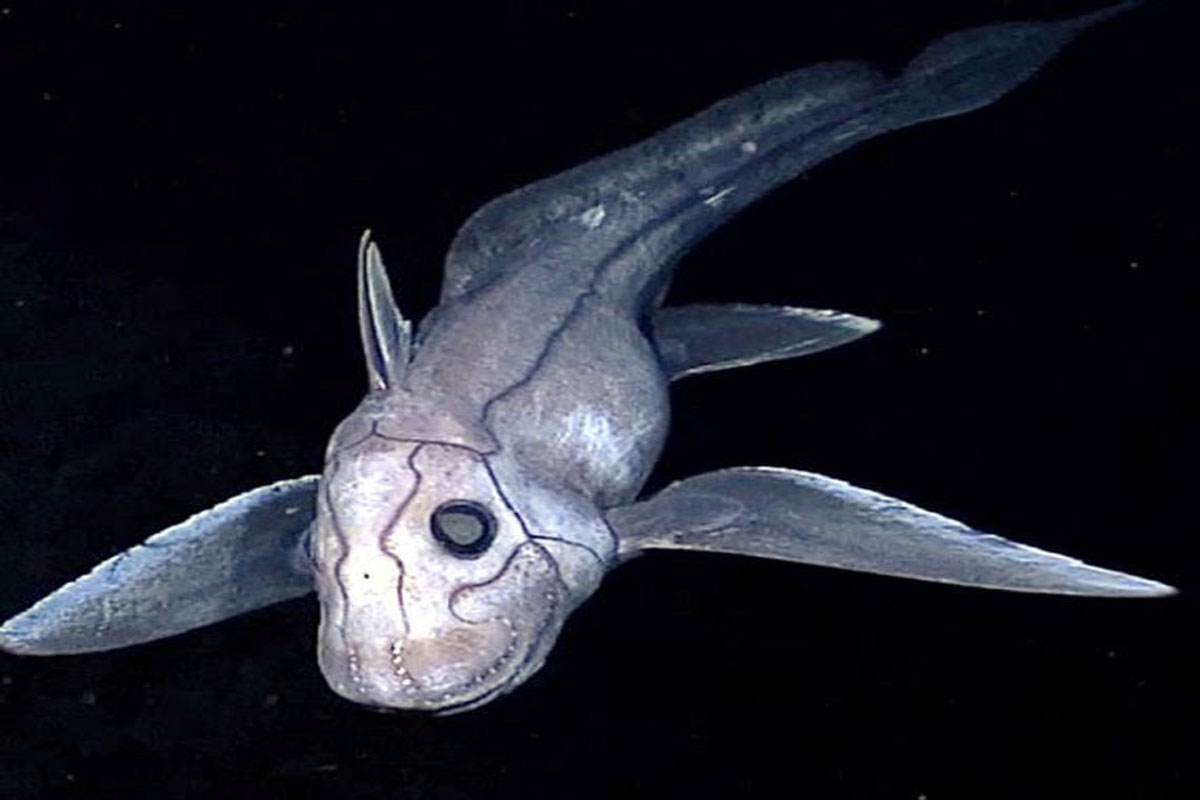
Extremely Rare Newborn Ghost Shark Captured Near New Zealand
Paul Seaburn February 21, 2022
Two words rarely heard in the same sentence are “ghost” and “shark” – and for obvious good reasons. One would think that nothing good could come from an encounter with the ghost of shark or a ghost with a shark or a ghost riding a shark – and one would be correct … unless one is a marine biologist. Those damp scientists in New Zealand were giddy when news emerged containing those two words: an extremely rare, newly hatched ghost shark was captured at a depth of about 1.2 km (.75 miles) near the South Island. Shouldn’t they have been afraid because it’s a ghost … or a shark … or both?
“You can tell this ghost shark recently hatched because it has a full belly of egg yolk. It’s quite astonishing. Most deep-water ghost sharks are known adult specimens; neonates are infrequently reported so we know very little about them.”
 Ghost shark egg case illustration (Public domain: “ŒUFS” (Eggs), illustration by Adolphe Millot from Nouveau Larousse Illustré [1897-1904])
Ghost shark egg case illustration (Public domain: “ŒUFS” (Eggs), illustration by Adolphe Millot from Nouveau Larousse Illustré [1897-1904])
In a press release by the NIWA (National Institute of Water and Atmospheric Research), NIWA Fisheries Scientist Dr Brit Finucci can’t hide his giddy delight over the capture of a newborn ghost shark on the Chatham Rise, an area of ocean floor east of New Zealand that is part of the Zealandia continent. Like their cartilaginous relatives — sharks and rays – ghost shark embryos develop in egg capsules laid on the sea floor and feed off a yolk until they hatch. Unlike their cartilaginous relatives, ghost sharks are not sharks – they’re chimaeras (also known as rat fish, spookfish, or rabbit fish) whose last shared a common ancestor 400 million years ago.
“From better studied chimaera species, we know that juveniles and adults can have different dietary and habitat requirements. Juveniles also look dissimilar to adults, having distinctive colour patterns.”
Finucci explains why the discovery of a newborn ghost shark will fill in a huge hole in the study of the species, which they normally can only analyze as adults. It may also highlight more differences between them and sharks. (Photo of the ghost shark baby here.) The biggest is the most physically noticeable one: male chimaeras have retractable sexual appendages on their foreheads and in front of their pelvic fins. Their bodies are elongated and soft with a bulky head, upper jaws fused with their skulls, and separate anal and urogenital openings. Their jaws have just three pairs of large permanent grinding tooth plates – not rows of sharp teeth like their shark cousins.
 A deep-sea chimaera seen by the Little Hercules in the Sulawesi Sea as part of the NOAA Okeanos Explorer Program. (Public domain: NOAA)
A deep-sea chimaera seen by the Little Hercules in the Sulawesi Sea as part of the NOAA Okeanos Explorer Program. (Public domain: NOAA)
“We’ll take a little tissue sample and random genetics. Then we’ll do a whole bunch of morphometrics or body measurements as well, which will also help us assess what species we’re looking at.”
To answer your question about what’s in store for the baby ghost shark, it sounds like its life has been given up for science. Which begs the question: do ghost sharks have ghosts? And if they do, will this one’s haunt Dr. Finucci and her team?
If this ghost shark comes back as a ‘ghost’ ghost shark, will the movie be better than “Sharknado”?
(Note: featured illustration is public domain from plate 10 of Oceanic Ichthyology by G. Brown Goode and Tarleton H. Bean, published 1896.)
MU*


















